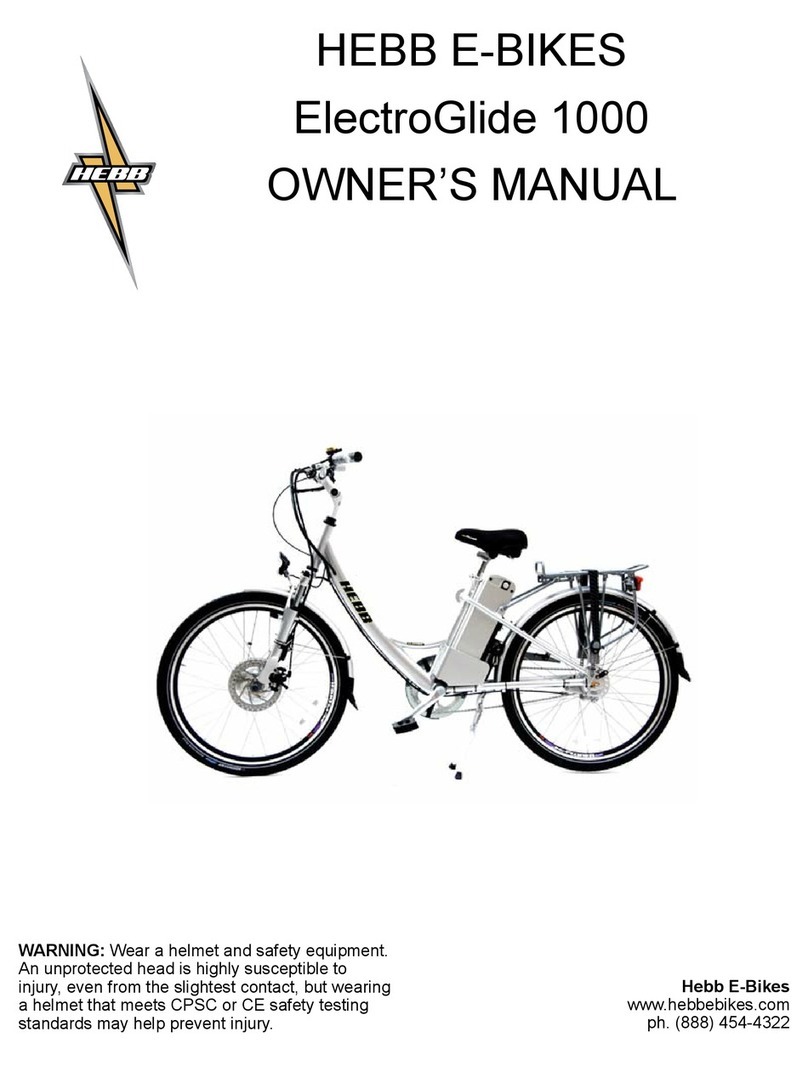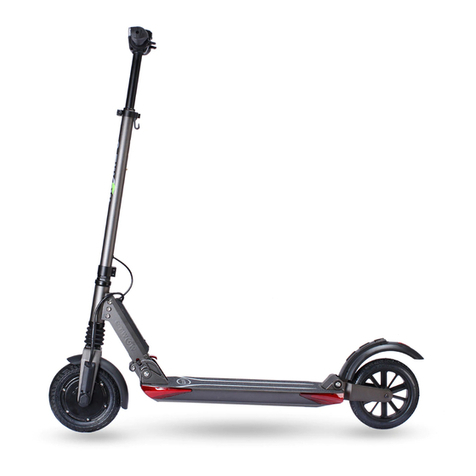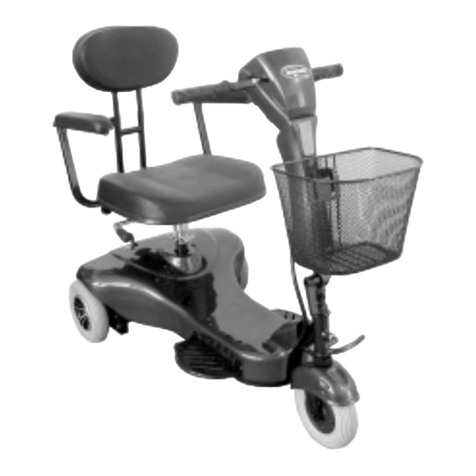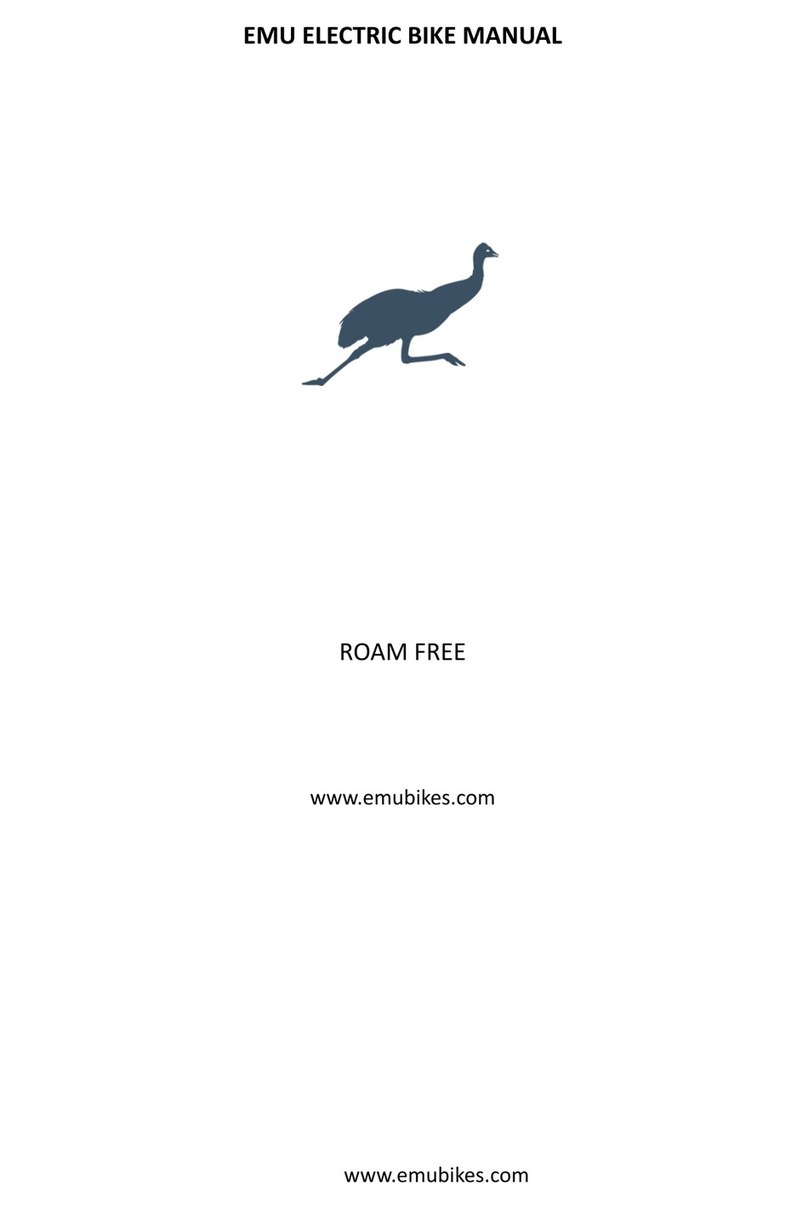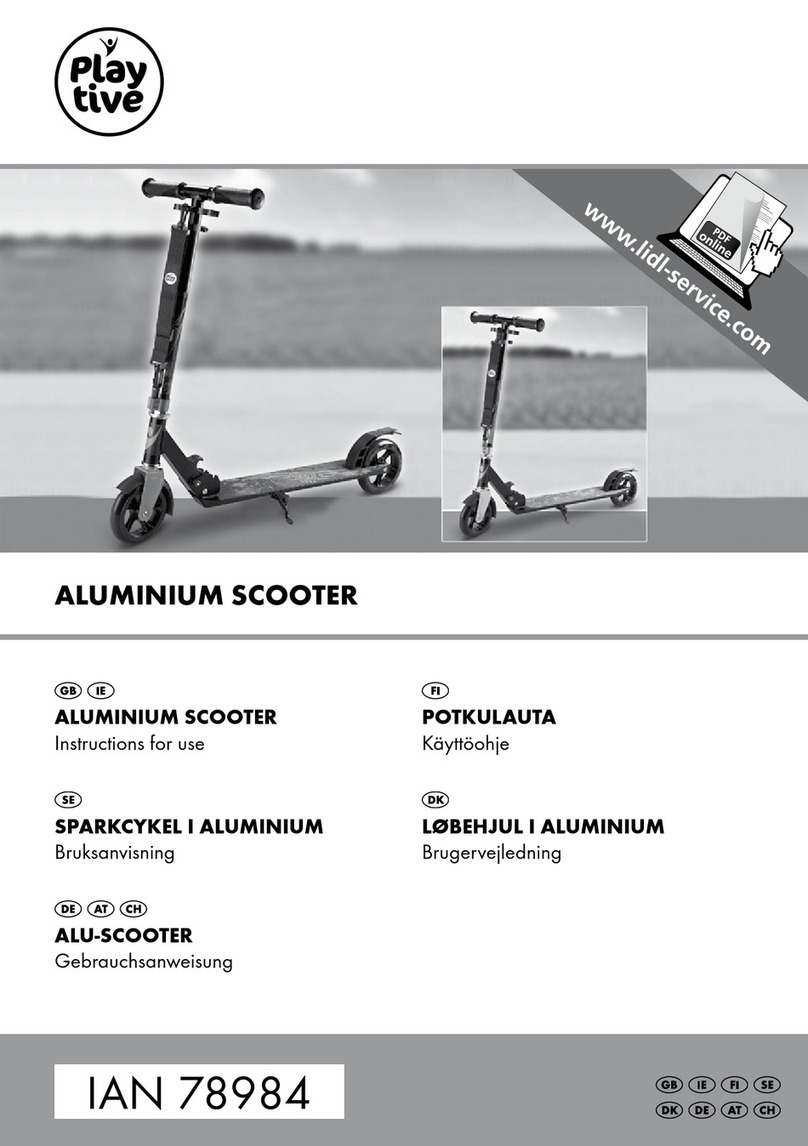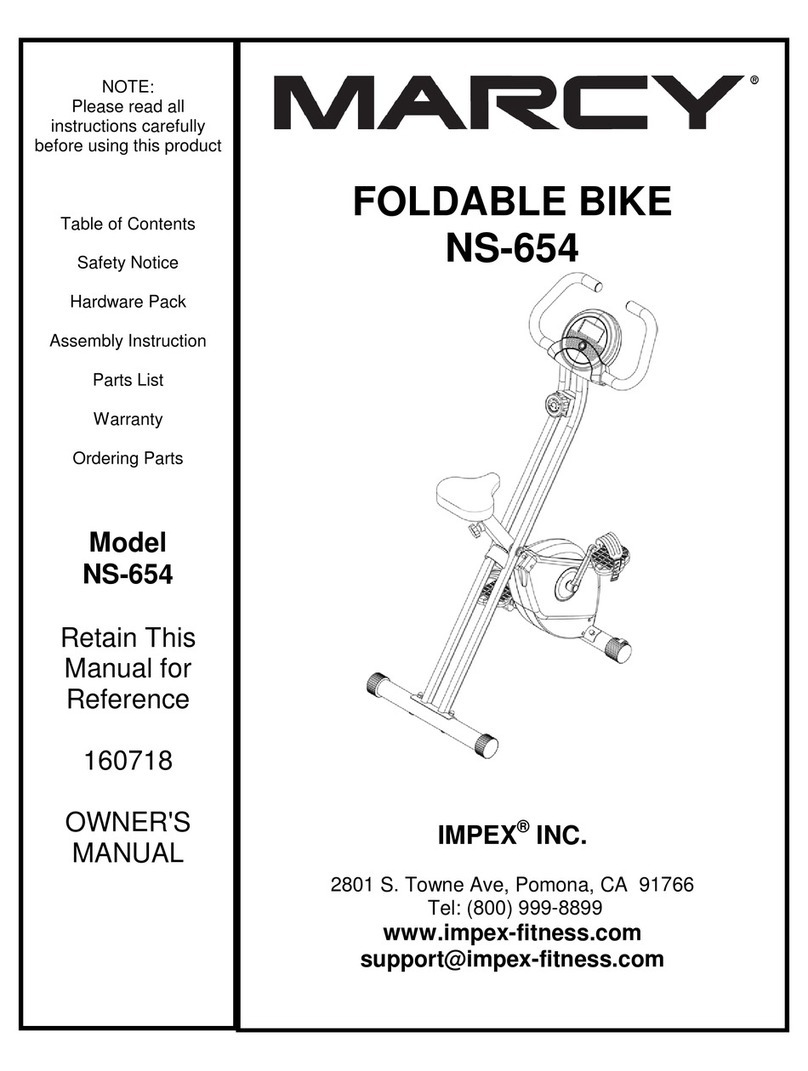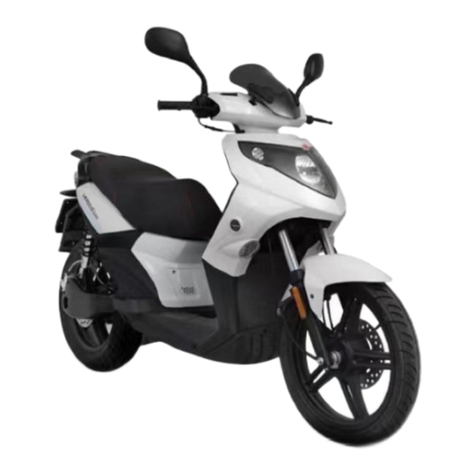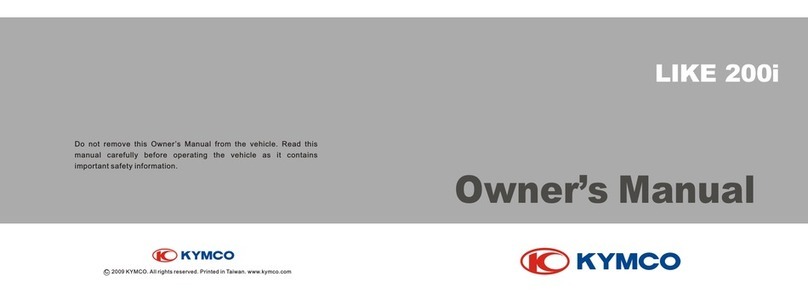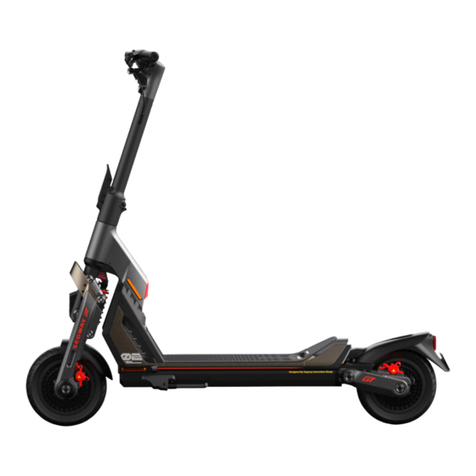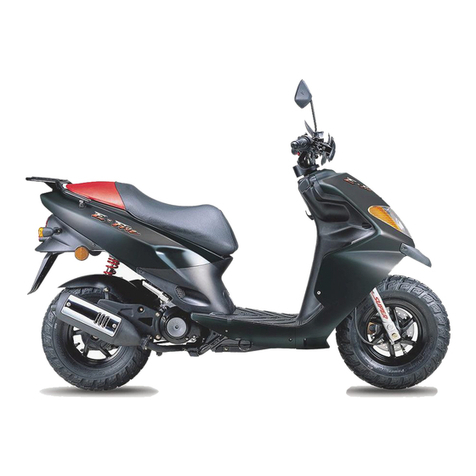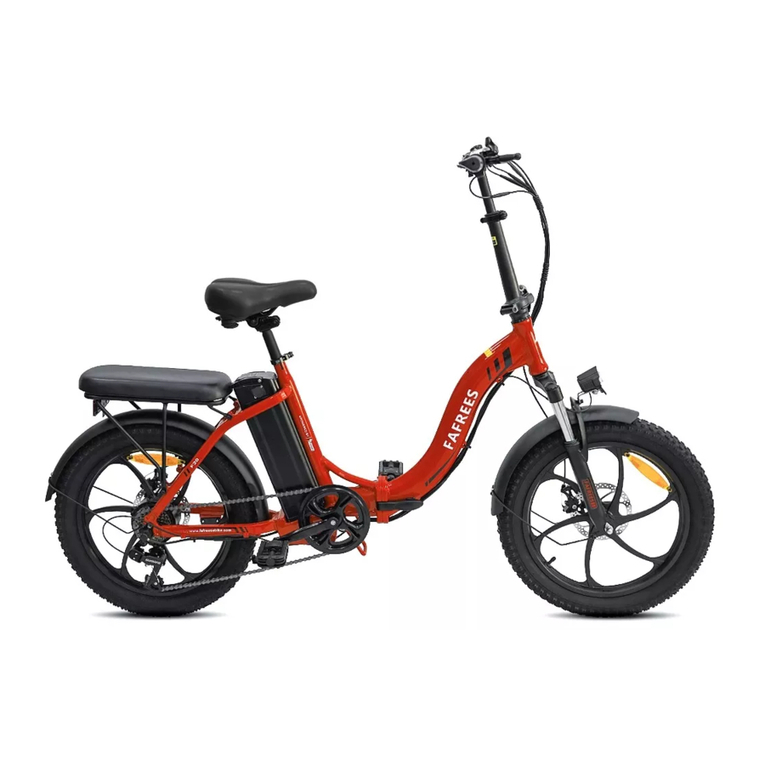Hebb 500 User manual

www.hebbebikes.com
Model 500
USER MANUAL
Hebb E-Bikes
P.O. Box 133096
Tyler, TX 75713
www.HebbEbikes.com

Contents
Welcome .......................................................................................... 2
Warranty .......................................................................................... 3
Regulations and Technical data ....................................................... 4
Parts Identication .......................................................................... 5
Unpacking ....................................................................................... 6
Battery charging and Care .............................................................. 7
Assembly.........................................................................................10
Checklist .........................................................................................13
How the Hebb E-Bike works ........................................................ 14
Maintenance .................................................................................. 16
Troubleshooting ............................................................................ 18
Contact us ...................................................................................... 20

Welcome
Congratulations on the purchase of your Hebb Electric bike. You’re one step
closer in realizing a whole new way of commuting that is fast, fun and friendly
to the environment.
The hub motor is brushless and uses a technology called Pulse Wave Modulation
control, so that it’s not subject to wear like a regular DC motor. Planetary reduction
gears incorporated into its hub gives it a very strong torque, working in unison
with your leg power to atten out those hills and to overcome headwinds.
Under normal cruising conditions (16 mph), the motor draws about 5 amps at
140 watts with 3 foot pounds torque and has an efciency of about 80%. Its
electric consumption is about 1.0 kwH for 62 miles - even less energy than the
food you would consume riding by leg power alone. Making it by far the most
efcient vehicle ever made.
While the Hebb pledge to quality means our components are high value and
reliable, it’s your part to understand safety implications and the possible risks of
cycling. So please take some time and read this manual. It explains the bike in
detail and how to take care of it, so that you can enjoy using the bike for many
years to come.
Hebb Electric
2

Warranty
How the warranty applies
As the makers, we warranty against possible material or construction defects,
provided the following conditions are satised :
• Proof of purchase. The warranty starts on the date of purchase.
• Only the rst owner is entitled to the warranty.
• 2 years for the frame, fork, all mechanical and electrical parts, except normal
wear and tear items.
• 1 year for the battery up to 70% depth of discharge from its original rated
capacity. This can be veried by the dealer where the bike was purchased.
How the warranty does not apply
• When the bicycle is used negligently or has damage resulting from a trafc
accident.
• Normal wear and tear.
• Poor maintenance or modications that no longer comply with regulations or
original specications.
• Damage due to external causes.
• The bicycle is used for rental.
• The battery pack is used incorrectly or damaged. This also applies to improper
charging.
• Compensatory costs arising from damages or accidents, or cost incurred by loss
of the bicycle’s usage.
How the warranty works:
• Original defective parts that are sent or returned to the dealer for assessment
will be replaced by the same or equal value part.
• Labor and transportation charges are not included.
3

USA regulations allow a power assisted maximum speed of 20 mph. Hebb E-Bikes made for
the USA have a motor speed of 250 rpm for a 20 mph top speed and a maximum rated power of
700 watts. The power assist utilizing a throttle can function without the aid of pedaling, however
there’s nothing to stop you from doing so. Pedaling will greatly increase the mileage you get
from your battery.
Typically, this means you do not require a license or moped certicate, there is no age limit and
you can take cycling paths. It conforms to regulations of normal bicycles. Legal requirements
concerning insurance and other regulations of your bicycle may differ in certain municipalities
and states, so be sure to check the regulations where you live.
Weight 60 pounds
Motor 350W electric brushless motor with planetary reduction gears
Battery Pack Lithium ion with battery management circuit 37V 10Ah
7 pounds. Low voltage protection 28V.
Discharge temperature limit 5F to 130F
Controller PWM, LED self-diagnostic system
Overload protection 20 amps
Charger 2 Amps Smart Charger
Maximum charge time – 6 hours
Charging temperature 41F to 95F
Interface E-Bike throttle with safety ON/OFF switch
Fuse 30 amps
Assembly
Regulations
and
Technical Data
4

Parts Identifcation
Parts Identifcation
1
2
3
4
5
6
7
8
9
21 20 19 18 17 16 15 14 13 12 11 10
25
24
23
22
26 27 28 29 30 31 32 33 34 35 36 37
Sprint
1 Brake cables
2 Front LED lighting
3 Mudguards
4 V-Brakes
5 Rims
6 Spokes (13g)
7 Hub motor
8 Reectors
9 Tyres 26” x 1.95”
10 Suspension front fork
11 Motor wire casing
12 Bearing race
13 Frame
14 Pedals
15 Chainwheel 48T and crank
16 Pedal sensor
17 Central support stand
18 Chain 1/2 x 3/32
19 Chain stay
20 Chainguard
21 Shimano roller brakes
22 Shimano Nexus Internal gears
23 Tensioning bolt and plate
24 Rear LED lighting
25 Al. luggage rack
26 Controller / Ignition
27 Battery
28 Saddle ip catch
29 Saddle
30 Seat post
31 Seat post clamp (quick x)
32 Headstem
33 Handle grip (Throttle)
34 Brake levers
35 Gear shifter
36 Battery level gauge
37 Handlebars
8
HEBB
1 Brake cables
2 Front LED light
3 Fenders
4 Disc Brakes
5 Rims
6 Spokes (13g)
7 Hub motor
8 Reectors
9 Tires 26” x 1.95”
10 Suspension front fork
11 Motor wire casing
12 Bearing race
13 Frame
14 Pedals
15 Chain wheel 48T and crank
17 Central support stand
18 Chain 1/2 x 3/32
19 Chain stay
20 Chain guard
21 Shimano roller brakes
22 Shimano Nexus Internal gears
23 Tensioning bolt and plate
24 Rear LED Light
25 Luggage rack
26 Controller / Ignition
27 Battery
28 Saddle ip catch
29 Saddle
30 Seat post
31 Seat post clamp (quick x)
32 Head stem
33 Handle grip (Throttle)
34 Brake levers
35 Gear shifter
36 Battery level gauge
37 Handlebars
5
Model 500

If you have received your bike via UPS or a freight carrier instead of picking it up from
your local bike specialist, please read this section before starting to assemble your bike.
Unpacking: Carefully remove the bicycle by lifting it straight out of the box. Be
careful not to scratch yourself on the carton staples. Remove the packing material
around the bike and stand the bike on a clean at surface. Be sure to keep any small
part packages that come along with the bike. Discard box and packaging material only.
Dispose responsibly, recycle when possible.
This box should contain the Hebb Model 500 bicycle!
• An accessory box included and contains:
a. 3 Ignition keys
b. 1 Pair of pedals
c. 1 Battery charger
d. 1 Power cord
e. 2 Fuses (30 amps)
f. Nylon ties
g. Heat shrink tubes (assorted pre-cut sizes)
h. 1 Hex Key #5
i. 1 Hex Key #3
j. 1 Hebb 500 owner’s manual
k. Shimano Gear and Brakes Manual
• 1 Battery, Lithium Ion 37V 10Ah
Unpacking
Model 500
6
Unpacking
Model 500
Unpacking
Model 500

Battery Charging
Check the indicator lights on the front of the charger.
RED light indicates that the charger is connected and
running from an A/C outlet.
YELLOW light indicates that the battery is charging
GREEN light indicates that the battery is fully charged
It will take a maximum of 6 hours to fully charge your battery. You
may interrupt the charging at any time.
As Li Ion batteries do not suffer from memory effect, it is not
required for the battery to be empty to commence a recharge.
Top-up charging everytime you’ve completed your cycle ride is
recommended.
Kept in good condition Li Ion battery will perform at least 350 full
charge cycles, with a retention of 70% from its original capacity.
Please use only the Li ion charger as provided.
a. Male charging plug b, Charging cord c. Charger specications
d. Charger serial no. e. Cooling fan f. Fuse 10 Amps
g. Charger ‘ON’ LED h. Charging status LED i. Warning label
j. Power switch k. A/C voltage switch l. Power cord socket
15
i j k l
A new battery might take 2 - 3
charges before it performs at its
stated capacity.
Dispose your battery
responsibly, refer to your town
council or eZee dealer.
<
Before use, the battery needs to be fully charged. The battery charger works much like a
laptop computer charger and should be charged via a standard 110v/115v. outlet.
1. Insert charging plug into socket
on the battery
2. Plug power cord to charger
and to A/C outlet.
3. Turn the “ I/O “ switch
on the charger to I.
Unpacking
Model 500
Unpacking
Model 500
Battery Charging
and Care
Model 500
Battery Charging
Before your rst ride, the battery needs charging. Bring it to a
wall socket. (220V - 230V AC EU other countries or 115V AC US)
1 2 3
4
5
6
1 Fuse / Fuse holder (30 amps)
2 Battery grip
3 Charging socket
4 Battery slot guides
5 Batter lock slot
6 Serial number, battery information
Insert charging plug into socket on
battery and connect charger power
cord to A/C outlet. Turn on A/C outlet.
Turn the ‘1’ switch on the charger.
It’s important that to follow this
sequence of actions everytime you
charge the battery.
Do not remove the plug by
pulling the cord, always grip the
charging port by its metal body.
<
6
14
a b c d e f g h
7
a. warning label
b. on/off switch
c. a/c voltage switch set at 110v
d. power cord socket
Battery Charging
Before your rst ride, the battery needs charging. Bring it to a
wall socket. (220V - 230V AC EU other countries or 115V AC US)
1 2 3
4
5
6
1 Fuse / Fuse holder (30 amps)
2 Battery grip
3 Charging socket
4 Battery slot guides
5 Batter lock slot
6 Serial number, battery information
Insert charging plug into socket on
battery and connect charger power
cord to A/C outlet. Turn on A/C outlet.
Turn the ‘1’ switch on the charger.
It’s important that to follow this
sequence of actions everytime you
charge the battery.
Do not remove the plug by
pulling the cord, always grip the
charging port by its metal body.
<
6
14
a b c d e f g h

Battery Charging
Check the indicator lights on the front of the charger.
RED light indicates that the charger is connected and
running from an A/C outlet.
YELLOW light indicates that the battery is charging
GREEN light indicates that the battery is fully charged
It will take a maximum of 6 hours to fully charge your battery. You
may interrupt the charging at any time.
As Li Ion batteries do not suffer from memory effect, it is not
required for the battery to be empty to commence a recharge.
Top-up charging everytime you’ve completed your cycle ride is
recommended.
Kept in good condition Li Ion battery will perform at least 350 full
charge cycles, with a retention of 70% from its original capacity.
Please use only the Li ion charger as provided.
a. Male charging plug b, Charging cord c. Charger specications
d. Charger serial no. e. Cooling fan f. Fuse 10 Amps
g. Charger ‘ON’ LED h. Charging status LED i. Warning label
j. Power switch k. A/C voltage switch l. Power cord socket
15
i j k l
A new battery might take 2 - 3
charges before it performs at its
stated capacity.
Dispose your battery
responsibly, refer to your town
council or eZee dealer.
<
Check the indicator lights on the front of the charger.
RED light indicates that the charger is connected and running from an A/C outlet.
YELLOW light indicates that the battery is charging
GREEN light indicates that the battery is fully charged
It will take a maximum of 6 hours to fully charge your battery. You may interrupt the
charging at any time.
As Li Ion batteries do not suffer from memory effect, it is not required for the battery to
be empty to recharge.
Charging everytime you’ve completed your bike ride is recommended. Kept in good con-
dition, the Li Ion battery will perform 500 charge cycles, with a retention of 70% from its
original capacity.
Please use only the Li ion charger as provided.
Unpacking
Model 500
Unpacking
Model 500
Battery Charging
and Care
Model 500
If there is an A/C outlet near to where your bicycle is parked, it may not be necessary to
remove the battery from the bicycle to charge
8
A new battery might take 2-3
charges before it performs at
it’s stated capacity.
Dispose of your battery responsibly.
Battery Charging
Before your rst ride, the battery needs charging. Bring it to a
wall socket. (220V - 230V AC EU other countries or 115V AC US)
1 2 3
4
5
6
1 Fuse / Fuse holder (30 amps)
2 Battery grip
3 Charging socket
4 Battery slot guides
5 Batter lock slot
6 Serial number, battery information
Insert charging plug into socket on
battery and connect charger power
cord to A/C outlet. Turn on A/C outlet.
Turn the ‘1’ switch on the charger.
It’s important that to follow this
sequence of actions everytime you
charge the battery.
Do not remove the plug by
pulling the cord, always grip the
charging port by its metal body.
<
6
14
a b c d e f g h
a. Male charging plug
b. Charging cord
c. Charger specications
d. Charger serial no.
e. Cooling fan
f. Fuse 10 Amps
g. Charger ‘ON’ LED
h. Charging status LED

Unpacking
Model 500
Unpacking
Model 500
Battery Charging
Model 500
Sometimes after temporary disconnection, the charging status light may give a false
green reading. To verify that your battery is fully charged, switch the charger off, wait
for the charger lights to go out and switch it back on again. The charging status light
should quickly return from amber to green when the battery is fully charged.
The battery may be also charged on the bicycle. Please make sure that the bicycle key is
switched off.
If the battery refuses to accept a charge, contact your dealer for more information.
Battery charging is automatically regulated, and there is no danger of overcharging.
It is advised that you disconnect the battery and switch the charger off as soon as the
charging process is completed.
Do not charge the battery in wet conditions.
Never allow children to play with the battery or charger.
Do not leave your battery in a fully discharged state for long periods of time.
The battery will continue to self-discharge, resulting in damage. Even if not
using the bike, the battery should be charged at least one time per month for one
hour.
9

Unpacking
Model 500
Unpacking
Model 500
10
Tools required
• Allen / Hex key metric set
• Open-end at wrenches 6mm - 17mm
Seat post Insert into the seat tube of the bicycle frame and align. Tighten clamps and
ensure seat is rmly fastened. Tightening torque 12 ft. lbs.
Note: Do not adjust the seat post beyond its maximum extension mark.
Pedals are marked “L” and “R” for left and right respectively. Screw
in clockwise for the “R” pedal and counter-clockwise for “L”. Tighten
both with a wrench rmly but not excessively as the crank threads are
made of aluminum alloy.
Tools required Tools are the rst step to proper assembly,
you will need a
Allen / Hex key metric set
Philips head screwdriver
Open-end at wrenches metric
measurements 6mm - 17mm
Front wheel Insert the hub motor wheel into the front fork,
ensuring that it is properly seated in the dropout slots. Tighten the
nuts alternatively on both sides till the wheel is secured.
Tightening torque 35 Nm
Seat post Insert into the seat tube of the bicycle frame
and align. Tighten clamps and ensure seat is rmly fastened.
Tigtening torque 16 Nm
Do not adjust the seat post beyond its maximum extension
mark.
Sprint Assembly
6
Handlebar / Stem / Headset Handlebar
and stem comes pre-assembled. Loosen bolts
on the stem and insert and turn the handle
bar assembly until it is in right angles with the
frame. Then tighten.
Tightening torque 18 Nm
10
Handlebar / Stem / Headset Handlebar and stem
comes pre-assembled. Loosen bolts on the stem and insert
and turn the handle bar assembly until it is in right angles
with the frame. Then tighten.
Tightening torque 13 ft. lbs.
Assembly
Model 500
Sprint Assembly
Pedals Pedals are marked “L” and “R”
for left and right respectively. Screw in clock-
wise for the “R” pedal and counter-clockwise
for “L”. Tighten both with a wrench rmly but
not excessively as the crank threads are made
of aluminum alloy.
Front Mudguard The supports are
attached to the sides and top of the front fork.
The mudguards are made of polycarbonate and should not rattle
when they’re securely fastened.
Brakes One of the most important safety features on
the bicycle. To minimise the risk of injury, its vital to ensure they are
corrected adjusted. Ensure that the V-brake blocks are parellel to
the rim, and that the distance between them do not exceed 2mm,
then tighten the brake mounting bolts. Fine tune with a philips head
screwdriver. Squeeze brakes to test its responsiveness.
For more information about the rear Shimano Roller brake, please
read the Shimano manual that comes along with your purchase.
Models that come with disc brake options, check that the wheels
rotate freely without touching the pads.
If you have little experience with bicycle maintenance. We
recommend you get this done with your local bike shop.
Accessories Install any optional accessories you have
purchaed with your bike. Read the manufacturer’s manual
provided.
<
11

Front Fender The supports are attached to the sides and top of the front fork. The
fenders are made of poly carbonate and should not rattle when they’re securely
fastened.
Brakes One of the most important safety features on the bicycle is the brakes. To
minimize the risk of injury, it’s vital to ensure they are correctly adjusted. For more
information about the rear Shimano Roller brake, please read the Shimano manual that
comes along with your purchase.
If you have little experience with bicycle maintenance, we recommend you
consult your local bike shop.
Tires Ensure that the tires are inated to the correct pressure of 50 - 60 psi. Well
inated tires enhances the comfort, safety and efciency of your ride.
Unpacking
Model 500
Unpacking
Model 500
Assembly
11
Model 500

Battery (Note: Make sure the battery is fully charged before the rst use): Insert
key into keyhole located by the controller box and turn key counter clockwise while
pressing it in, so that it arrives in the open, unlocked position.
Release the catch located at the underside of the seat saddle to ip it over. Locate the
battery anges in their slots in the battery holder; then push the battery rmly into
the holder until the connecting pins are rmly in the battery sockets. The t can be
tight when new, so it may be required to apply gentle pressure. Once the battery is in
position, lock into place by turning the key one click clockwise to the “OFF” position.
Ensure that the key is in “OFF” position until you are ready to ride. Do not use
excessive force to t the battery, which could result in damaging the connection sockets
or pins.
Unpacking
Model 500
Unpacking
Model 500
Assembly
12
Model 500

Usage The Hebb 500 is best described as an urban bike and is best suited for usage in an
urban environment and paved roads. While cycling, it is your responsibility to be attentive
of your environment and trafc rules.
a. Wear shoes that stay on your feet and grip rmly to the pedals. Do not wear sandals
or ride barefoot.
b. Dress to be visible on the road and avoid loose clothes that will tangle with
moving parts of the bicycle.
c. Keep your speed at levels appropriate to road conditions
d. Be aware of wet weather conditions, as these affect braking distance. Brake
earlier than you normally would on dry roads.
e. Familiarize yourself with the trafc rules in the state you are riding in.
f. Avoid cycling in poor weather and visibility conditions such as fog, night, heavy
rain and snow. Keep your lights on in such conditions.
g. Familiarize yourself with the usage of the bike and how to maintain it.
Inspect Before every ride, make a quick inspection of your bike’s mechanical and
electronic features. Be safe, not sorry.
Frame and fork Visually check for damage, do not ride if bent or fractured.
Wheels and tires Check for missing or damaged spokes. Feel spokes to ensure
tightness. wheels should be true (straight) and tires inated to its correct pressure.
Handlebar and stem Tightened rmly in the ‘face forward’ positions.
Brakes Squeeze brake levers. Brake cables should remain unobstructed by other cables or
accessories.
Chain Turn crank arms to ensure chain runs smoothly. Keep the chain lubricated and
clean. Chain tension is adjusted by the tensioning bolt located at the end of the frame.
Electronics Red light from the controller unit should be illuminated when the electric bike
is ‘ON’. All wires should be fastened securely in place.
Unpacking
Model 500
Unpacking
Model 500
Checklist
13
Model 500

Your rst ride Before you wheel your bike out into the world, we recommend you
practice handling the bike in a safe area away from obstructions and trafc. The motor
may look small, but it’s powerful! You’ll be riding faster than you think.
Turn the key to the ‘ON’ position. A red LED will illuminate below the key socket. If
the light ashes, read the Troubleshooting section of this manual. If it shines steadily,
you’re ready for the next step.
E-Bike or Throttle Mode The motor runs as soon as you turn the throttle. Ensure
that you are seated and ready to ride before you use the throttle. You may toggle the
throttle on and off with the switch located on it. In E-bike mode, the range of
your bike will be approximately 25 miles. Weight of the user, the terrain, and how
much you use the throttle are all factors in how far you can go.
You can always choose to ride your bicycle as an ordinary bicycle.
Battery level gauge When riding a fully charged bicycle, the battery level gauge
shows ‘green’. Powerful acceleration or uphill riding causes the battery voltage to
drop and may bring the level gauge to ‘amber’ or even ‘red’ (in the cases of
very steep hills). As you continue to cycle and the battery power drops, the level
gauge will correspond to the state of charge remaining. When it remains in ‘amber’
and dips into ‘red’, you have approximately a 1/3 of the charge left. Best to recharge
the battery soon. To prevent the battery from deep discharge, the controller has a
low voltage protection cut-off set at 30.0 V. You may reboot the battery if it cuts
off, however continued use of the battery by switching off and on will cause deep
discharge and permanently damage the battery.
Unpacking
Model 500
Unpacking
Model 500
How the Hebb
E-Bike Works
14

Lighting system Hebb bikes features wide angle high performance reectors at the front,
sides and rear. Front and rear LED lights are powered by the main battery; electrical
consumption is negligible, be safe, use them often.
Lock When parking your bicycle, turning the key to the ‘OFF’ position and removing it
will shut the system off and lock the battery in place. Use a chain lock to further secure
your bicycle when necessary. We also recommend you insure your bike against theft.
Central support stand This spring loaded stand supports your bike straight up. Use your
feet to depress the stand downwards and pull the bike backwards. Ensure the stand is
rmly rested on the ground before leaving the bike. Do not sit on the bike with the stand
parked. The central support stand is made of aluminum alloy and meant to only take
the weight of the bicycle and not with the rider on it.
Luggage rack The luggage rack provided comes equipped with a spring loaded catch
and elastic strap. If you plan to carry luggage on the rear, make sure everything is
securely fastened and clear from the rear wheel. There are many useful accessories
that can be tted on the rear rack, from panniers to child seats. Do however take note that
the load limit is 50 lbs.
Unpacking
Model 500
Unpacking
Model 500
How the Hebb
E-Bike Works
15

Maintaining your bicycle ensures you’ll get the most out of every ride and out of the
entire life of your Hebb bike. How much of your bike’s maintenance you can do yourself
will depend on your knowledge, skill, experience and whether you have the necessary
tools for the job. Learning from available cycling literature and joining cycling
communities can be an enjoyable way of improving your skill and knowledge about
maintaining bicycles. Beyond this manual, it is good to consult your Hebb dealer for
advice regularly.
Before every ride: Perform mechanical safety checks and use a fully charged Battery.
Every 10 hours of riding Clean the bike, including chain rings and sprocket. Clean and
lightly oil the chain.
Every 20 - 30 hours of riding Squeeze the brakes and rock the bike to check for any
looseness with each forward or backward movement. If the headset is loose, tighten
it or have your dealer check it. Lift the front wheel and rotate handlebars to check for
tightness of steering, it may be necessary to lubricate ball bearings. Check and recalibrate
the brakes, replace if worn out. Squeeze spokes in adjoining pairs between your thumb
and index nger. They all should have the same tension. Have your dealer re-spoke or
true the wheel if necessary. Check cables for rust, kinks and fraying, have your dealer
replace them if necessary.
Unpacking
Model 500
Unpacking
Model 500
Maintenance
16

Repairing a punctured tire
If you have a punctured tire, we recommend that you get a bike dealer to repair the tire.
You can always, of course, carry out the repairs on your own. As there are no electronic
components on the rear wheel, follow standard procedures as with normal bicycles with
internal gears. Read the Shimano gear manual provided for more instructions. As the front
wheel contains the hub motor, there are additional steps in the case you require the entire
wheel to be removed from the bike. A philips head screwdriver will be required to open
the cable housing to rst unplug the wires than run from the motor to controller. There
should be 1 x 6 pin connection and 3 color coded wire connections (Blue, Yellow, Green).
Unplug these before proceeding to remove the front wheel. Be mindful of the tightening
assembly sequence of washers, nuts and spacers.
Hub motor and general inspection
After 5,000 kms (3,000 miles) of cycling, we recommend you arrange to have a thorough
inspection of your bicycle by a dealer. This includes opening up the hub motor to inspect
and lubricate the gears.
Unpacking
Model 500
Unpacking
Model 500
Maintenance
17

Unpacking
Model 500
Unpacking
Model 500
Troubleshooting
18
Troubleshooting
22
Electronic self-diagnostic system
When the bicycle is functioning normally, the red LED that is
situated by the controller is lit continually.
In the case of an electronic malfunction, the controller comes
programmed with diagnostic capabilities to determine where the
fault lies. The red LED will emit a series of blinks, count them and
refer to the table below for its explanation and solutions.
No. of
blinks
Explanation Solution
2 Brake lever cut off in
contact
check brake lever spring, brake levers should
return to position (applicable with electric cut-off
levers)
3 Brake lever cut off in
contact
check wiring connection, inspect for damage to
the battery level gauge
4 Throttle not in position check if throttle spring is faulty
5 Throttle failure check throttle connections or replace
6 low voltage recharge battery or loose battery cable
connection
7 excessively high voltage measure battery voltage, contact your eZee
dealer
8sensor fault contact your eZee dealer
9 motor incompatibility contact your eZee dealer
10 overheat, thermostat
activated
allow to cool, reboot system
11 thermostat failure replace controller
12 amps control / controller
failure
replace controller
No light Power failure check battery, power cables or replace controller
Electronic self-diagnostic system
When the bicycle is functioning normally, the red LED that is situated by the con-
troller is lit continually. In the case of an electronic malfunction, the controller
comes programmed with diagnostic capabilities to determine where the fault lies.
The red LED will emit a series of blinks, count them and refer to the table below
for its explanation and solutions.
Hebb
Hebb
Hebb

Troubleshooting
The faults listed may not cover every possible failure. In the event of moisture or
water entering the controller, haphazard signals might appear. We’ve designed the
Hebb E-Bike to repel water as much as possible, encapsulating circuit boards with
silicone resins and connections with silicone grease.
Since this manual simply cannot cover every detail that might occur during the
lifetime of your product. Check our websites and dealers website routinely for
updates, or contact us directly for more detailed questions you might have.
Serial Numbers Record the serial numbers found on your motor, frame, controller,
charger and battery here for reference.
Motor s/no. :
Charger s/no. :
Controller s/no. :
Battery serial no. :
Frame no. :
Proof of purchase Keep your proof of purchase with the date of purchase clearly
marked.
Afterword
Unpacking
Model 500
Unpacking
Model 500
Troubleshooting
19
Table of contents
Other Hebb Scooter manuals
